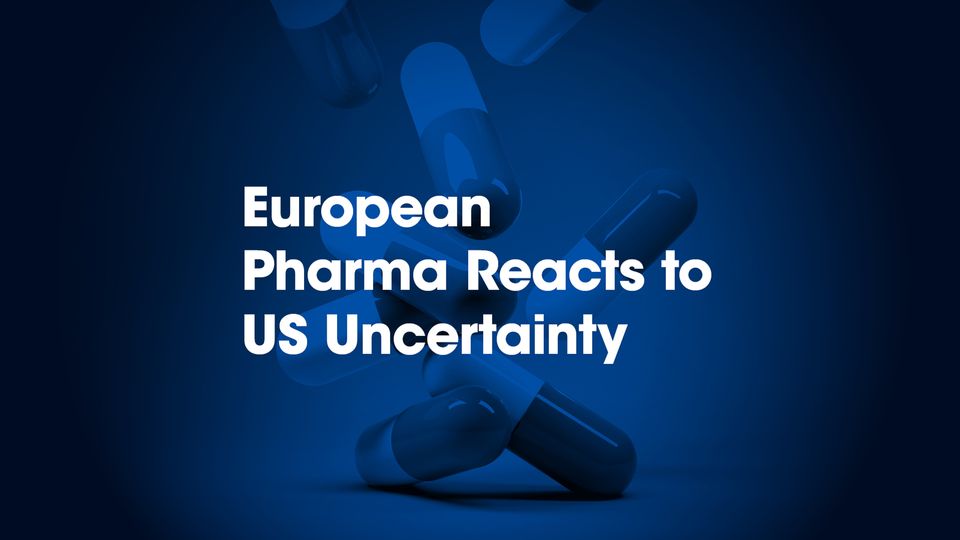What Could Lower US Drug Prices Cost the Rest of the World?
European pharma executives discuss how a US most-favored-nation model could reshape drug pricing strategies worldwide.

Complete the form below to unlock access to ALL audio articles.
Since US President Donald Trump issued an executive order in May highlighting plans to drive down US drug prices, the pharmaceutical industry has been anxiously awaiting further details on what impact this could have on global prices.
The most-favored-nation policy would mean that drug companies would need to match the lowest price for a drug abroad (among comparably wealthy nations) when selling to US consumers.
A 2021 comparison by the US Government Accounting Office found that prescription drugs were, on average, two to four times more expensive in the US compared to Australia, Canada and France. Citing these figures among others, President Trump has said he would order drug companies to reduce their prices inside the US, posting on his social media platform that the prices of prescription medicines would fall “almost immediately, by 30% to 80%.”
It’s unclear how the White House would punish drug companies that don’t voluntarily comply with the principle, but in the orders, President Trump stated, “Should drug manufacturers fail to offer American consumers the most-favored-nation lowest price, my Administration will take additional aggressive action.”
President Trump tried to install a similar program for drugs that fall under Medicare Part B in 2018, but the courts struck the plans down on procedural grounds. The Biden administration did not pick up these efforts when it took over in 2021.
The most-favored-nation announcement is one of many made by the Trump administration in recent months targeting the pharmaceutical industry. It follows threats of tariffs targeting imported branded, generic and biosimilar pharmaceutical products.
In the second article in Technology Networks’ series exploring how European pharmaceutical companies are responding to whirlwind changes in the US, we hear from pharmaceutical executives on what impact a most-favored-nation policy could have on the global prices and supply of drugs.
How could changes to US drug pricing impact drug manufacturers?
With a particularly complex healthcare system consisting of a large private insurance industry, employer subsidies and publicly funded insurance programs for the elderly and people from low-income backgrounds, standardizing US drug price targets is tricky. In many other developed countries, more centralized systems allow officials to negotiate blanket rates for drugs and refuse to buy if they deem the price too high in certain instances.
Dr. Lindsay Davies, chief scientific officer at NextCell Pharma AB, believes these disparities between healthcare systems mean Europe is unlikely to feel the effects of any US price changes. “Within Europe, I can see very little impact from this change in policy. Costs in the US and differences in healthcare systems play a central role in the differences we already see in drug list prices between the regions,” she told Technology Networks.
Other experts are more concerned about the impact any price changes may have on quality, and any potential knock-on effects that choking off the supply of drugs could have on patients. “I would be more concerned as to the impact on quality that any cuts in prices may cause. Cost savings generally come at a cost to quality, which may have serious implications for patient health,” Rob Scott, head of translation consultancy at eXmoor Pharma, told Technology Networks.
Notably, any changes to US drug prices could have an impact on how and where funding is spent, some experts argue. “For manufacturers, especially in Europe, this may shift the financial dynamics of drug development. With the US long-serving as the most lucrative market, lower returns could lead some companies to reassess launch priorities or reduce investment in high-risk programs,” Thomas De Maria, head of business development – US at ReiThera Srl, told Technology Networks.
This may not all be bad news for drug manufacturers outside of the US, however. The possible changes represent an opportunity for European-based developers and contract development and manufacturing organizations to stand out, offering efficient, scalable solutions that align with evolving payer expectations. “If this occurs, we believe there are new opportunities and new ideas on servicing the global market from Europe. As pricing models shift, global demand for cost-effective, high-quality manufacturing will grow,” De Maria said.
“The key will be balancing innovation with affordability, while ensuring supply chains remain robust enough to meet global demand as the pricing discussions evolve,” he continued.
Low-income countries and high-risk therapeutics could be hit hardest
A downward pressure on global drug prices could take place as a result of a “reference pricing cascade,” Alexander Seyf, co-founder and CEO of Autolomous, told Technology Networks. This could have a significant impact on drug affordability in lower-income countries: “Significant US price drops could force pharmaceutical companies worldwide to lower prices to maintain market access, impacting their global pricing strategies. This also threatens tiered pricing models for essential medicines in lower-income countries, potentially eroding affordable access if manufacturers are reluctant to offer deep discounts that trigger US price reductions,” explained Seyf.
“Lower US prices could also lead to reduced supply to other lower-price markets, as companies prioritize higher-margin regions or delay launches. This could cause drug shortages globally,” said Seyf.
These pressures could have a particularly detrimental effect on the funding of drug modalities typically considered to be high-risk, such as cell and gene therapies (CGTs). “These aggressive price cuts risk disincentivizing innovation, especially for high-risk, high-reward CGTs requiring massive R&D investment, thereby impacting the global therapeutic pipeline,” Seyf stated.
The executive order will apply to branded medicines that do not currently have generic or biosimilar competition. Therefore, it's unknown how prices may be affected if a particular drug doesn’t have such competition in the US but has generic or biosimilar competition in the most favored nation. For example, Enbrel® (etanercept), a drug for treating rheumatoid arthritis, and its biosimilars have been on the European market for years but aren’t expected to enter the US market until 2029.
Seyf believes that reduced profitability for branded drugs could have a knock-on effect on the generic market, “potentially leading to discontinuations and exacerbating existing shortages.”
Could the proposed changes to US drug prices be a non-starter?
While the knock-on effects of a most-favored-nation model being implemented in the US may appear alarming, it could be some time before any changes come into effect. At a Goldman Sachs Global Healthcare Conference last month, pharmaceutical executives said that the Trump administration had not provided enough details as to how it would achieve the lowered drug prices promised.
To date, the only information made public about the model is that the lowest prices will be selected among “a set of economic peer countries” with at least 60% of the US gross domestic product per capita. The actual most-favored-nation price targets have yet to be communicated.
Given the lack of clarity around the plans, it’s currently unknown how the drop in US drug prices promised by President Trump will be achieved and if it's possible to overcome the logistical and legal challenges that come with such a move. As such, it could be a while before we see any real change to global drug prices.
“In the short term, we do not see much change as this will take time to evolve. Yes, efforts to cut US drug prices could create a global ripple effect—pressuring margins, altering pricing benchmarks and reshaping market access strategies worldwide. But we currently think there will be further discussions before anything happens long term,” said De Maria.
“Drug costs in the US represent an estimated 3% of the total annual $1 trillion healthcare expenditure, a relatively small fraction. Therefore, any aggressive cost-cutting measures targeting pharmaceuticals will have minimal impact on overall healthcare spending. However, such actions could have disproportionately damaging consequences for the biotech industry,” concluded Seyf.







